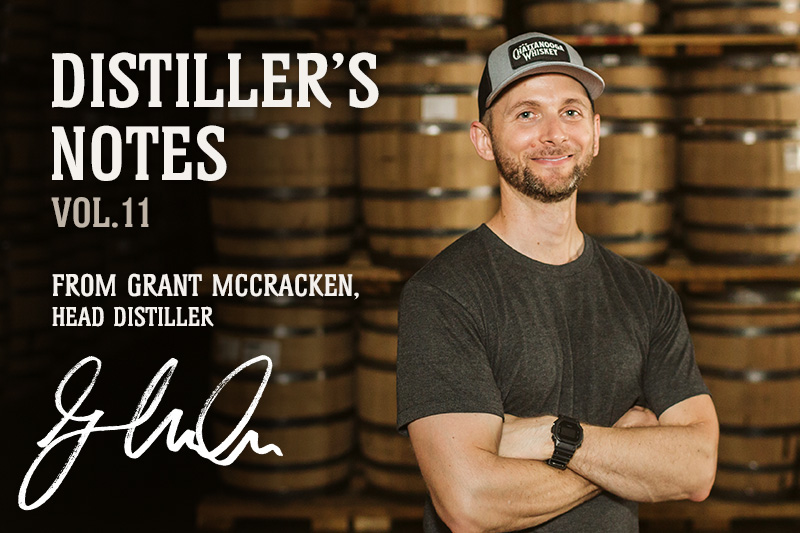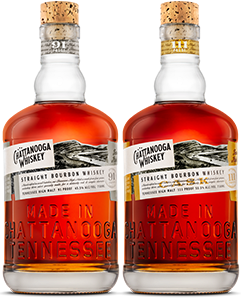
Distiller’s Notes Vol. 11: The High Malt Frequency
THE HIGH MALT FREQUENCY
Ever heard of the Schumann resonance? Until recently, neither had I. The phenomenon, predicted and discovered by physicist Winfried Otto Schumann, is created when the dozens of lightning bolts that strike the earth’s surface – every second – shake and excite a portion of our atmosphere to create and amplify an inaudible, low-frequency radio wave.
Some scientists have discovered a link between the intensity of the resonance and the earth’s average surface temperature; others believe we might be able to harness the radio waves as an abundant form of free energy; and some even declare this frequency is the earth’s “heart beat”: a radio pulse that resonates with our own brainwaves – and a hypothetical “origin story” of human consciousness as we know it! Phew! Suffice it to say, the Schumann resonance must be doing, or “saying,” something, we just need to “listen,” and figure out what it’s telling us.
Resonance isn’t just limited to fringy, cosmic theory though – everyday examples are all around us. Musical instruments resonate audible frequencies which sound “happy” or “sad” based on how they resonate with our ears & brains; microwaves use the resonant frequency of water to excite their molecules and “cook” our food in a matter of minutes; and solar cells use the idea to harness energy from our sun – some 94 millions miles away. In fact, nearly everything made of matter has its own signature resonant frequency. You could even argue that every single barrel of whiskey, with their different ages, proofs and mash bills are all – molecularly – different from the next.
So – if Tennessee High Malt had a frequency, what would it sound like? Rock & roll? Early 90s hip hop? It’s hard to say. Since 2017, we’ve released nearly 50 experimental batches & barrels – created from a palate of over 150 different malted grains. Batch 001 focused on the complementary depth of rye malt and caramel rye malt; Batch 004 expressed the earthy-sweet interplay between malted oats and peated malt; and Batch 005 highlighted the sweet grain character of 3 different wheat malts. Alone, each of these whiskeys had its own flavor profile and each one “said” something different. Together, though, they defined the range and depth of a style we call Tennessee High Malt.
To this day, we’ve scaled over 20 of our favorite Experimental recipes to our larger Riverfront Distillery. But amongst the hundreds of experiments, and dozens of scale-ups, one style we’d yet to create is a bottled-in-bond whiskey. Bottled-in-bond has long been referred to as one of our vocation’s most time-honored quality standards. By definition, it must be: at least 4-years-old; 100 proof; all made in the same style; by the same company; at one distillery; in one 6-month distilling “season”. A long, noble list, for sure. And while there is no shortage of world-class bottled-in-bond whiskeys out there, we wanted to challenge ourselves to make something that “spoke” to us on a deeper level.
So, the operative question became: which of our bourbon recipes best exemplified the depth and range of our style? Not surprisingly, the answer to that question had a lot to do with personal preference. Some distillers love the earthy-smoke character of Batch 004. Others prefer the toasty-sweet, cereal character of Batch 005. Yours truly has a soft spot for the drinkable, sweet & spicy balance of “Barrel 91”. Unfortunately, none of these recipes spoke to everyone in the same way, nor did any one mash bill showcase the entire spectrum & story of Tennessee High Malt. At some point, we realized that the only way to make something that resonated with the team – collectively – was to include every whiskey & distiller in the process. And from this, came a new goal: create a blend of whiskeys that resonated together, and was greater than the sum of its parts.
It probably goes without saying, but in the world of blending, all whiskeys are not created equal… and I know that sounds bad, it’s actually a good thing. Some of our whiskeys bring structure, some provide depth & complexity, and others add bright, fruity top notes. Individually, they highlight the range of our style – but together – they create balance, depth & resonance, impossible to recreate from just one recipe.
And if no whiskey is the same, neither are the distillers who make them. What I taste will almost definitely be different than what you taste, and the words I use to explain it will be different, based on my own life experiences. For example, the same person who prefers a “high wheat malt” whiskey that reminds them of a butterscotch candy jar might be less sensitive to that key compound (diacetyl) than a diacetyl “super taster” who prefers a “high rye malt” that smells like grandma’s pumpkin pie (eugenol). Without knowing each individual’s exact flavor preferences and sensitivities, tuning ourselves to the “true” flavor profile of a whiskey can seem about as elusive and obscure as the Schumann resonance itself.
Fortunately, technologies do exist that can analyze the flavor components of a whiskey. Gas chromatography is one very useful tool to dissect and measure different compounds in a liquid and can help identify its molecular “signature”. Unfortunately though, it tells us nothing about how good it is, or how it resonates or “speaks” to someone. For that, we rely on a tool more valuable than any expensive machine or highly trained palate: trust. Trust in each other’s interpretation of the whiskey and trust in the whiskey’s expression of itself. In our minds, if we were listening to the whiskey and each other, the answers would reveal themselves, naturally. And in the end, they did just that.
Chattanooga Whiskey’s Bottled-in-Bond begins with 2017’s spring and fall vintages. These two expressions represent our first two distilling seasons at our Riverfront Distillery, and showcase the depth & complexity of 5 one-of-a-kind high-malt mash bills. 6 years after our first batch of Tennessee High Malt, we’re still listening – and still learning – but our philosophy is still the same: listen to the whiskey, and follow its lead. Our greatest hope for this project is that each and every vintage resonates with you in a new and meaningful way. If it does, please credit the work of our entire distilling team , who pour their hearts & souls into our whiskey, every day. Just don’t forget to leave some for the whiskey itself – after all, we just did what it told us to do.

